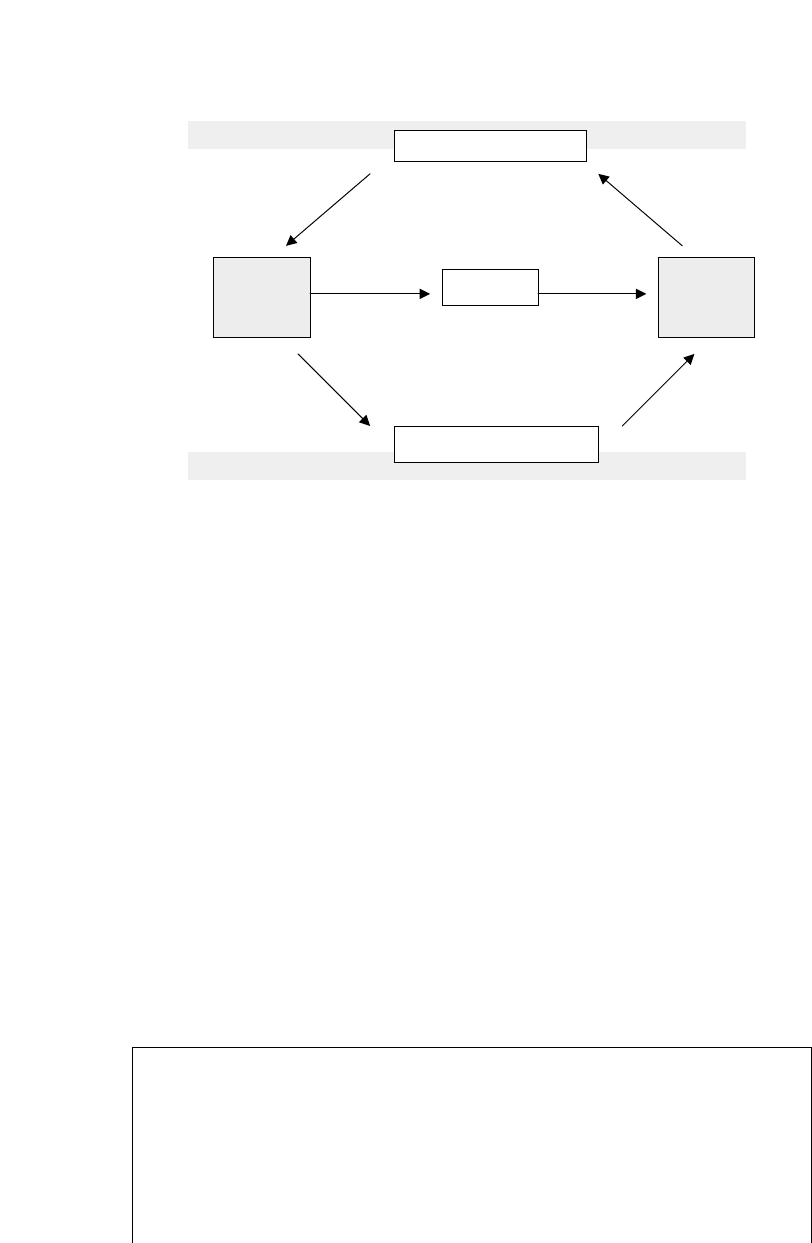
5
Options processing
Option contracts have different characteristics to futures. The key
differences are that options are based on calls and puts. Options are
traded on- and off-exchange and are usually referred to as traded
options when based on a security or currency and as options on
futures or futures options when the underlying is a futures contract.
A call option gives the buyer the right, but not an obligation, to take
delivery of the underlying, whilst a put option confers the right but
not the obligation to make delivery of the underlying.
As a result of this characteristic the risk/reward profile is very dif-
ferent for the buyer and the seller. The buyer cannot lose more than
they pay for securing the right. This is shown in Figure 5.1.
In the Figure 5.1 the option is illustrated by the bold line. If the
buyer paid 10 for the right to buy a call option then the maximum
loss that can be made is 10 and we see the bold line takes a horizon-
tal line when that amount of loss of value is reached. However, the
underlying is shown as the dashed line and here the loss continues
as the underlying falls in value. On the upside the underlying imme-
diately makes a profit as the price rises but cost of securing the right
must first be recovered by the rise before a profit can occur. This is
shown in the Figure 5.1 by the bold line crossing the arrowed line
further along the rise, i.e. after it has increased in price by 10. For
the option buyer this is the breakeven point and any further increase
in the value of the underlying will be a profit. Conversely, for the
seller this is the point when a loss will start to occur.
The situation for the buyer of a put option is reversed as shown in
Figure 5.2.
The seller of the option, called the writer, has an obligation. They
receive the payment from the buyer to secure the right, often referred
to as the premium, but must wait to see if the buyer exercises their
right. If they do not, then the writer keeps the premium. If they do,

then the writer keeps the premium but must now either make delivery
of the underlying to the buyer in the case of a call option or take deliv-
ery of the underlying in the case of a put option as Figure 5.3 shows.
In the Figure 5.3 we see that there are alternative titles that can be
used, for example taker, buyer and holder can all describe the pur-
chaser of the option. We can also see that the buyer pays a premium
to the writer. If the option is a call and is exercised by the buyer the
underlying moves from the writer to the buyer, the opposite occurring
if the buyer exercises a put.
Understanding this characteristic is important, as part of the set-
tlement flow is based around whether the option is a call or a put.
When making an opening purchase, the buyer of an option becomes
known as a position holder and is said to be long of the market.
When making an opening sale, the seller of an option becomes
known as a position writer and is said to be short of the market.
Option positions can be either long or short. In special circum-
stances, both long and short positions can be held gross. Long or
short option positions are normally closed out at the time of trans-
acting the opposite position.
84 Clearing and settlement of derivatives
P/L
+
0 Underlying price
–
Figure 5.1 Call Option
Figure 5.2 Put Option
P/L
+
0
–
Underlying price

Options are also traded in styles that refer to the exercising of the
right by the buyer, and once again this is important in terms of the
settlement profile of the option. These styles are:
• American – exercisable on any business day
• European – exercisable on expiry
• Bermudan – exercisable at preset timings
• Asian or Average – exercised against an average underlying price.
American and European style options are traded both on exchange
and over-the-counter, whilst Bermudan and Asian options are pre-
dominantly traded over-the-counter.
Options have a strike price (also referred to as an exercise or a deliv-
ery price). The strike price is the price used to calculate the value of
the underlying when it is delivered as a result of the buyer exercising
their right.
Example
An investor purchases one BP Amoco October 330 Call option @
20p. Their broker executes the order on the Euronext.liffe market
where the contract specification states that each option contract
is for 1000 ordinary shares and they are traded as American style
options.
Options processing 85
Figure 5.3 Option Obligations and Rights
CALL Option
PUT Option
Holder
Buyer
Taker
Premium
Writer
Seller
Granter
Underlying
Underlying
..................Content has been hidden....................
You can't read the all page of ebook, please click here login for view all page.
